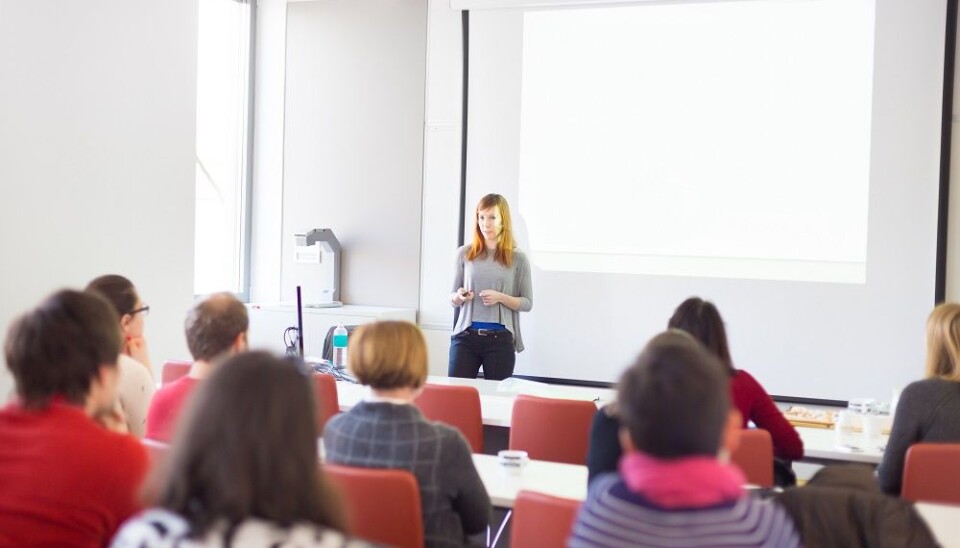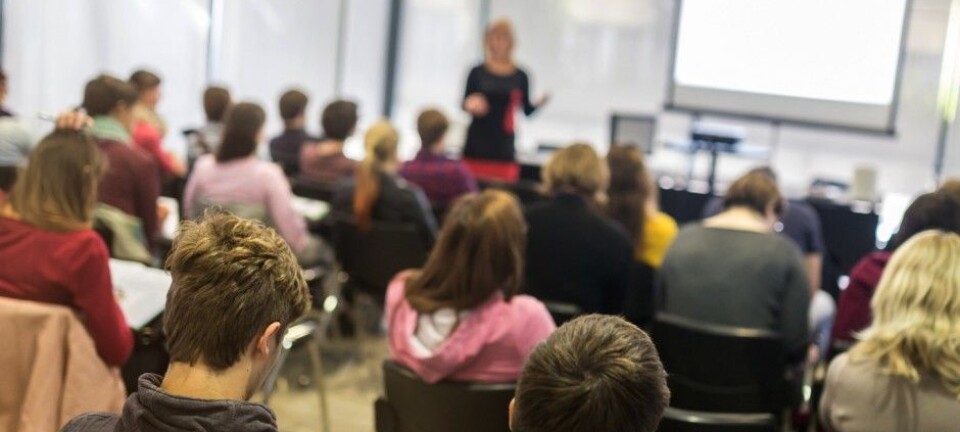This article was produced and financed by BI Norwegian Business School

Swapped lectures with video and group sessions
A Norwegian math lecturer figured he should be interacting more with his students, rather than just summarizing the course syllabus during the time he had disposable for teaching.
Lectures have been the dominant form of instruction in higher education for nearly a thousand years. The lecturer stands there, centre stage, reviewing material for students who are not always fully engaged in the process.
Lectures are simple and handy for the teacher, and cost-effective for the institution. As for the students this is not a particularly effective way to learn, according to Njål Foldnes, Associate Professor at BI Norwegian Business School.
"The passive role of the students hampers both learning and involvement," he says.
Study when motivated
Foldnes, who lectures in subjects including mathematics, has experimented with an alternative instructional strategy called "flipped classroom".
The method entails reviewing new material using videos that are tailor-made for the instruction. The videos are available on YouTube. Previously, reviewing the syllabus took up most of the time set aside for instruction. Using the new method, students can study the videos when they are motivated and focussed.
This means that instruction time can be used to practice, apply and reflect on the new material discussed in the videos.
Divided the class in two
Njål Foldnes randomly divided a large class into two groups. One group of 93 students had access to videos and instruction sessions on Tuesday afternoon. The other group, the control group, consisted of 142 students who attended ordinary lectures every Tuesday morning.
None of the 142 students who were told to follow the ordinary lectures said that they wanted to participate in the group that followed the new instruction method.
On the other hand, several of the students in the experimental group wanted to switch to traditional lectures. This scepticism disappeared after a couple of teaching sessions with the new system, so the value of the experiment was not diminished by "deserters".
Lecturer becomes a guide
The students in the experimental group were further divided into fixed groups of 6-8 students who worked together in the teaching sessions. The groups were composed of students who did not know each other from before, and who represented different grades, ages and genders.
Each group solved a number of tasks together, over the course of the semester. The students gradually felt secure enough to discuss their viewpoints, to help others, and to listen to suggestions offered by others. The students solved various mathematics problems in the teaching sessions, and got involved in their respective groups.
"Instead of lecturing, my role in the instruction is to guide and advise the students, clear up any misunderstandings, and to motivate," says Foldnes.
Learned more without lectures
Both groups, both those who followed ordinary lectures and those who took part in the new instructional system, had a total of 36 teaching hours. Foldnes tested the mathematics skills of the students both before and after the teaching period.
The students in the experimental group achieved significantly better results than the students who followed traditional lectures. Foldnes also checked for differences in the students' previous knowledge.
Exams were held four weeks later, and the learning effect was still evident.
Almost three of ten students (28 per cent) in the experimental group achieved top grades, while the corresponding figure for the students who followed traditional lectures was 11 per cent.
Greater involvement
"The positive results are most likely a result of greater involvement and more active forms of learning," according to the researcher.
Another positive effect is that the students gained experience with working in teams.
"They learned how to discuss and defend their opinions, and they learned to listen to others. Being able to function in a group together with others is certainly an important quality in their further studies and careers," he says.
Njål Foldnes wants to make sure that students learn more during the time they spend in instruction.
"For quite a long time, higher education has been oddly unaffected by new digital technologies, like video. It's time to do something about that”.
Reference:
Njål Foldnes: «The flipped classroom and cooperative learning: Evidence from a randomised experiment». Active Learning in Higher Education 2016, Vol. 17(1) 39-49.

































